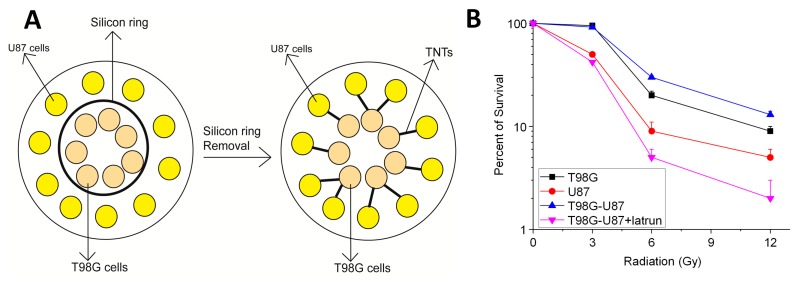Figure 3.
TNTs enable the transfer of protective agents to cancer cells that are susceptible to radiation and chemical treatment. (A) Using a silicon coculture system as described, T98G (glioblastoma, resistant to radiation and temozolomide (TMZ) treatment) and U87MG cells (glioblastoma, sensible to radiation and TMZ treatment) were cocultured to examine survival. Upon removal of the silicon barrier, both cell types could form TNTs and communicate with each other. (B) Quantification of the survival of T98G and U87 cells alone (back line and red line, respectively) and cocultured U87 cells (blue line). In this case, T98G cells are more resistant to radiation than U87 cells (0 to 12 Gy). However, upon coculturing and the subsequent formation of TNTs, T98G cells transfer the radiation resistance to U87 cells (blue line). The transfer of resistance was dependent on TNT formation, because the use of latrunculin (latrun), a TNT blocker, prevented the transfer of resistance into U87 cells (pink line). Thus, the TNT formation transfers a protective agent against radiation treatment from T98G to U87 cells. Thus, TNTs are essential to spreading chemical and radiation resistance into surrounding cells.

